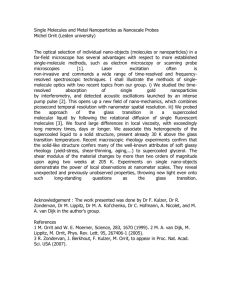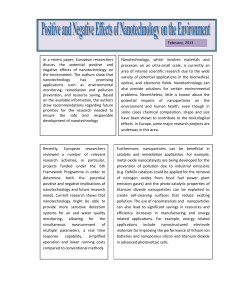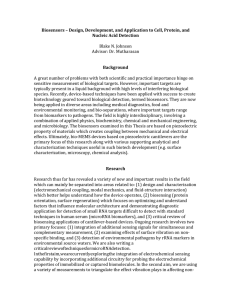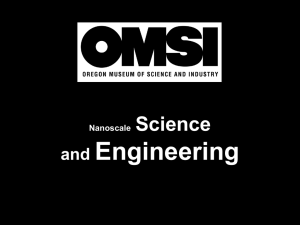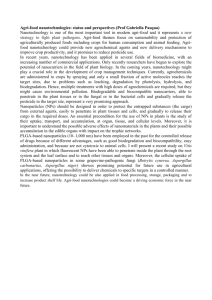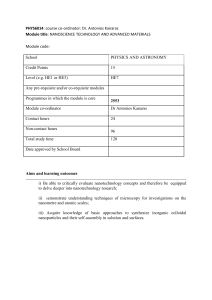Word-Dokumentvorlage Version 1.2 (Multilanguage)
advertisement
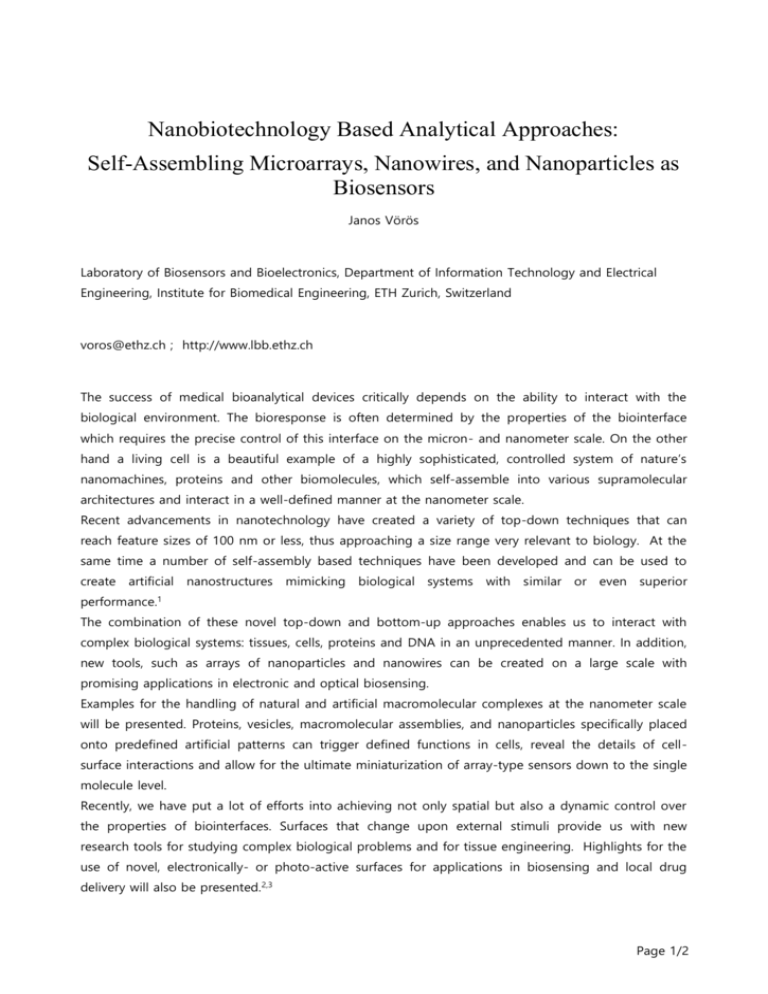
Nanobiotechnology Based Analytical Approaches: Self-Assembling Microarrays, Nanowires, and Nanoparticles as Biosensors Janos Vörös Laboratory of Biosensors and Bioelectronics, Department of Information Technology and Electrical Engineering, Institute for Biomedical Engineering, ETH Zurich, Switzerland voros@ethz.ch ; http://www.lbb.ethz.ch The success of medical bioanalytical devices critically depends on the ability to interact with the biological environment. The bioresponse is often determined by the properties of the biointerface which requires the precise control of this interface on the micron- and nanometer scale. On the other hand a living cell is a beautiful example of a highly sophisticated, controlled system of nature’s nanomachines, proteins and other biomolecules, which self-assemble into various supramolecular architectures and interact in a well-defined manner at the nanometer scale. Recent advancements in nanotechnology have created a variety of top-down techniques that can reach feature sizes of 100 nm or less, thus approaching a size range very relevant to biology. At the same time a number of self-assembly based techniques have been developed and can be used to create artificial nanostructures mimicking biological systems with similar or even superior performance.1 The combination of these novel top-down and bottom-up approaches enables us to interact with complex biological systems: tissues, cells, proteins and DNA in an unprecedented manner. In addition, new tools, such as arrays of nanoparticles and nanowires can be created on a large scale with promising applications in electronic and optical biosensing. Examples for the handling of natural and artificial macromolecular complexes at the nanometer scale will be presented. Proteins, vesicles, macromolecular assemblies, and nanoparticles specifically placed onto predefined artificial patterns can trigger defined functions in cells, reveal the details of cellsurface interactions and allow for the ultimate miniaturization of array-type sensors down to the single molecule level. Recently, we have put a lot of efforts into achieving not only spatial but also a dynamic control over the properties of biointerfaces. Surfaces that change upon external stimuli provide us with new research tools for studying complex biological problems and for tissue engineering. Highlights for the use of novel, electronically- or photo-active surfaces for applications in biosensing and local drug delivery will also be presented.2,3 Page 1/2 References 1. J. Vörös, T. Blättler, M. Textor, MRS Bulletin, 30(3):202-206, 2005. 2. C.S. Tang, M. Dusseiller, S. Makohliso, M. Heuschkel, S. Sharma, B. Keller, J. Vörös; Analytical Chemistry, 78:711-717, 2006. 3. B. Städler et al., Nanotechnology 18 (2007) 155306 Page 2/2

